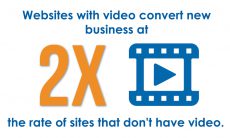What’s the future of digital media marketing and social public relations? What trends are we, as seasoned digital media marketers, seeing in the marketplace? What advice can we give the next generation of digital media marketing or PR pros for landing a job in digital marketing or communications? It’s spring, which means it’s mentoring season. Each year at this time, I meet with high school and college students eager to learn the secrets of a successful career and hear sage advice for creating effective digital marketing strategies. The great news for marketing and PR students? There are endless opportunities in digital media marketing. The great news for managers looking to hire? These students are sharp. I’m optimistic about this crop of talent.

Here are some of this year’s talking points.
 1. What trends are you seeing?
1. What trends are you seeing?
There are several, actually, and all are quite big.
Content marketing. The buzzword is new, but the practice of creating content that informs and educates – with a goal of selling a brand – is not. Content can be created or curated. Examples include how-to videos, ebooks, checklists, advice, discussions of the latest trends, and more. The Content Marketing Institute is a great resource.
SEO is an essential digital media marketing tactic. There’s a zettabyte of digital information in the world, according to IDC. (That’s 1 trillion gigabytes!) Don’t expect your news to be found if you’re not optimizing your press release, blog, or web site for search engines.
PR, marketing, and journalism are converging. Catchy slogans alone won’t sell your brand. It needs a compelling story that not just engages, but makes people want to talk about it. Journalists are experts at knowing what’s newsworthy and how to sustain interest; editors have a keen sense for stories that will attract the most users and viewers. Marketers understand the science that makes the story spread. They’ve got a good grasp of analytics. PR pros can manage the discussion and steer it in the right direction. All of these skills are essential for generating revenue through digital media marketing. No one can afford to go it alone.
Personal, targeted advertising will eventually dominate. Thank you, Facebook, for collecting all that data about our interests and likes – and turning them into ads.
2. What skills do Marketing and PR professionals need to succeed in digital?
Ultimately, PR people must start thinking like marketers, and vice versa. PR pros need to understand analytics (yes, that’s right – numbers!). This includes web metrics, market research, survey data, conversion rates, click-throughs and more. They also need to understand SEO. Journalists and PR people never used to think much about how people would get their news, as the options were few. That has completely changed. Perhaps the most radical thing I’ve learned in the last few months is that editorial stylebooks need to adapt to the way people search.
Marketing people need to understand how to converse and to tell stories. It’s not just about shorter copy for the Web, it’s removing meaningless phrases like “leading” and “innovative” from the marketing brochure. In fact, the brochure itself needs to be reinvented, as brands become less explicit about selling and more focused on solving real problems (which may or may not involve their products). Marketers should also learn how to steer conversations out of murky waters. Skills like bridging or pivoting are useful in social media too.
3. What’s the best way to get experience?
Internships are essential, and no student should leave college without one. In addition, take leadership roles in school clubs and activities. Lead marketing for your student government, or become editor of your school paper. Starting your own Web-based business works too. Ask Sergey or Mark.
4. What advice can you give for designing a digital media marketing campaign?
– Always start with research
– Understand your target audience – who they are, what they do online, where they go
– Make sure the activity links to overall goals
– Encourage conversation by including calls to action in each update or post
– Measure, measure, measure
5. I’ve heard about the 80-20 rule: That 20% of your content should be sales-y and 80% should be informational. What’s the right mix?
Ironic, isn’t it? The less you sell, the more you sell. People trust – and prefer to buy from – people who are known experts in their field. The 80-20 ratio seems reasonable to me, but I don’t think you’ll impede sales or retention if you set it at 90-10.
One final tip.
This one is for digital media marketers and PR pros of all ages:
Be a disciple of Life-Long Learning.
Change is a constant in life, and so there are always new things to learn. In digital media marketing, the rate of change is rapidfire. Read a lot, take classes or seminars whenever you can, find a mentor. If you’re not up to date on the latest changes, you’ll soon be out of clients or a job.






